In January 2023 I decided I was going to apply to the Royal Academy Summer Exhibition. The celebrated painter David Remfry was the exhibition coordinator for the Summer Exhibition. He chose the theme 'Only Connect' which is a quote from EM Forster's novel Howards End. I studied this book at school and I remember my teenage self was totally exhausted and exasperated by some of the characters in the book. In Howards End the phrase 'Only Connect' means a connection between the spiritural and quotidian. David Remfry uses it to mean a connection between oneself and everything else.
Inspiration can come from lots of different places. I am usually inspired by nature - I find it incredibly beautiful and would like to be able to distill some of that beauty into my work. More recently I have been inspired to create pieces reflecting the way I am feeling about things that are going on around me, including how I feel when listening to certain pieces of music.
When I start a new piece I always have an idea of what I am making, but quite often that changes as I begin the process - touching the materials and seeing how they work together. I start by creating a picture on the table

This first image shows the initial placing of the grasses onto the table and then having pressed them into the porcelain. I am thinking about the title of the exhibiton "Only Connect" and whilst making I am thinking about the connection between land and sea.
After having pressed the grasses into one side of the clay in a chaotic fashion I came back the next day and guided by my intuition add seaweed, increasing the textural layers.

I wanted to accentuate the connection between the land and sea using the grasses and seaweed. I was starting to think about how everything is connected. All of us are connected whether we like it or not.
Whilst rolling the seaweed, I decided to add lavender to the inside (it smells so good and the smell makes me feel calm). Previously I would have only had texture on one side of the sheet of clay, but I wanted to push this piece further. At this stage I am wondering - will I know when to stop? Does it matter? How much rolling can the porcelain stand?

I am now thinking about the contrast between the inside and the outside of the lamp. On the inside is the cool refreshing lavender (I could still smell it) and on the outside is the grasses and seaweed swirling in a melee. I am also wondering whether the Royal Academy will accept something that has to be hung from the ceiling?
The Royal Academy was one of the first galleries I visited as a child. My Great Aunt Aileen Hamilton, who was a painter and a potter, took me and my Mum and sister on a trip to the gallery to inspire us. In my mind the Royal Academy Gallery is a revered institution, yet somewhere I have always enjoyed visiting. The feeling of reverence made me feel scared about applying for this exhibition, but then I reminded myself that I have more than 30 years experience of working in clay, so if I can't apply now, when can I?! I love a bit of a challenge and also enjoy working to somebody else's brief.
Here is the extra large pendant shade waiting to go in the kiln for the biscuit firing:

This is it, out of the kiln, after the biscuit firing. A pure canvas tentatively awaiting the explosion of colour:

Whilst applying the glazes I was thinking about explosions: verbal explosions, explosions of joy AND the explosions of bombs. Even through war we are connecting with others - just in a massively negative way.

It took me a few days to glaze this piece as I kept on going back and looking and checking. I wanted the colours on the inside to contrast with the colours on the outside. I wanted to see what would happen when illuminated.

The first time I saw the pendant shade lit was when Veronique Leplat photographed it. I was so happy to see the different textures and colours shining through.
The image brings to mind an intense sunset, and as you look closer (although this photograph doesn't show it) you start to see bits that make me think of the milky way and pictures of space.

The colours on this piece change depending on the light levels coming through the clay and in the room. In an artificial environment like a gallery my ideal way of exhibiting this piece would be to show it with the light levels slowly changing - with the light bulb slowly gets brighter and then darker over a period of at least 5 minutes. That way the different textures and colours will be able to be fully appreciated and enjoyed by the viewer. In a home environment this would happen naturally over the course of a day and indeed a year as the seasons change and the light levels shift through out.
These are the 3 images that I chose from the wide selection of images that Veronique Leplat took of my porcelain pendant piece that I submitted to the Royal Academy of Art:



In 2023 over 16,000 people applied to the Royal Academy of Arts Summer Exhibition. Sadly my work didn't get accepted for the Summer Exhibition that year, however it was a great fun taking part & helped develop my creativity and confidence.

